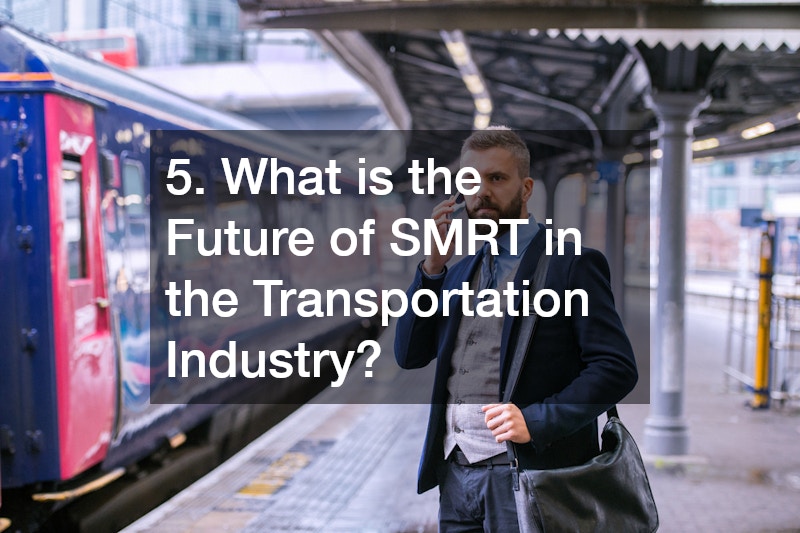Explore how SMRT transformed transportation, reshaping the industry with innovative solutions and improving commuter experiences. Understand the strategic decisions and technologies that enabled this evolution.
1. What Made SMRT a Pioneer in the Transportation Business?
1.1 Implementation of Cutting-Edge Technologies
SMRT adopted advanced technologies like autonomous vehicles and data analytics to enhance operational efficiency. These technologies allowed SMRT to streamline its operations, improving reliability and reducing costs.
The use of real-time data analytics helped to optimize routes and improve the efficiency of transit schedules. By investing in these technologies, SMRT set a new standard for operational success in the transportation industry.
Autonomous vehicles showcased SMRT’s commitment to pioneering innovation. These vehicles not only improved safety but also provided an unparalleled level of service consistency to commuters.
1.2 Focus on Customer-Centric Services
SMRT’s strategies centered on improving customer satisfaction through enhanced service offerings and amenities. This focus resulted in higher customer loyalty and increased ridership.
By understanding and addressing commuter needs, SMRT was able to tailor their services to provide exceptional value. Investment in customer service technology further engaged the commuter base, reinforcing their dedication to excellence.
Additionally, they implemented feedback mechanisms that allowed continuous improvement based on customer inputs. Such customer-centric approaches established SMRT as the industry leader in commuter satisfaction.
2. How Did SMRT Impact Urban Mobility?
2.1 Integration with City Infrastructure
Integration of SMRT’s transportation solutions into urban environments supported seamless city growth and development. Their systems were designed to enhance connectivity across various urban regions, benefiting countless commuters daily.
SMRT collaborates with city planners to ensure harmonious development with existing infrastructure. This strategic alignment promotes sustainable urban growth and maximizes the utilization of public resources.
By supporting city infrastructure, SMRT’s services have become integral to urban mobility strategies. Their solutions reduce congestion and encourage the use of public transit, positively impacting city ecosystems.
2.2 Promoting Sustainable Transportation
SMRT is committed to promoting sustainability by reducing environmental impacts through green technologies and practices. This commitment is reflected in their investment in energy-efficient transportation systems.
Electric and hybrid vehicles have been introduced, contributing to cleaner air and reduced carbon emissions. These efforts position SMRT as a frontrunner in sustainable urban transport solutions.
Moreover, their green initiatives are not only environmentally beneficial but also attract eco-conscious commuters. SMRT’s approach demonstrates the viability of sustainable practices within the transportation sector.
3. What Challenges Did SMRT Face in Revolutionizing Transportation?
3.1 Navigating Regulatory and Political Landscapes
SMRT faced numerous regulatory challenges in its efforts to expand and innovate. Navigating these complex landscapes required strategic partnerships and advocacy.
Regulations often dictated the pace and extent of technological deployment. Therefore, SMRT engaged proactively with policymakers to promote frameworks that support technology-driven growth.
Political climates also influenced project timelines and public perceptions. SMRT’s adept navigation of these dynamics ensured that innovation was not stifled by regulatory hurdles.
3.2 Addressing Public Concerns and Expectations
Meeting public concerns and expectations was a cornerstone of SMRT’s strategy. Transparency and communication were prioritized to maintain public trust.
Public concerns included the safety, reliability, and accessibility of services. SMRT responded with robust strategies that addressed these areas through public consultations and feedback loops.
By continuously refining their services based on public input, they maintained a good public image. Their responsiveness to concerns contributed significantly to their industry reputation.
4. How Did SMRT Influence Global Transportation Trends?
4.1 Setting Industry Standards
SMRT established new benchmarks in the industry, influencing competition and setting standards for others to follow. Their leadership in technology and operations management forged new paths of excellence.
Through exemplary practices, SMRT inspired transit companies globally to innovate. Incorporating high standards in every aspect of service enriched the overall industry landscape.
This pioneering spirit demonstrated that quality and innovation are achievable. SMRT’s commitment to excellence continues to influence global transportation norms.
4.2 Spurring Technological Advancements
Through investment in research and development, SMRT catalyzed technological innovations industry-wide. Their advancements pushed boundaries and inspired new transit technologies.
Adoption of IoT systems and digital platforms has heightened efficiency and convenience. This cultural shift toward digital transformation prompted rapid global adaptation within the industry.
Moreover, SMRT’s advocacy for technological advancement reinforced its role as an industry trailblazer. Other companies aspired to match their commitment to progress, furthering the growth of global transport sectors.
5. What is the Future of SMRT in the Transportation Industry?
5.1 Exploring Future Innovations
As SMRT looks to maintain its edge, exploring future innovations remains a strategic focus. They continually research emerging technologies to integrate into their systems.
The potential for AI-driven services and enhanced digital platforms can revolutionize the commuter experience further. SMRT’s commitment to innovation ensures it remains at the forefront of these developments.
Exploring opportunities in novel transport solutions keeps them ahead of the curve. Such initiatives signal a promising future of technological exploration and adaptation.
5.2 Expanding Global Influence
SMRT is poised to expand its influence on global markets by entering new geographical regions. Strategic global partnerships are opening pathways for wider service distribution.
Their success stories encourage collaboration with international entities seeking similar progress. Global expansion strategies are designed to replicate domestic success on a larger scale.
Through strategic planning and partnerships, SMRT aims to leave a broader mark on global transportation industries. Their ambition encompasses influencing future innovations and solidifying a global presence.

